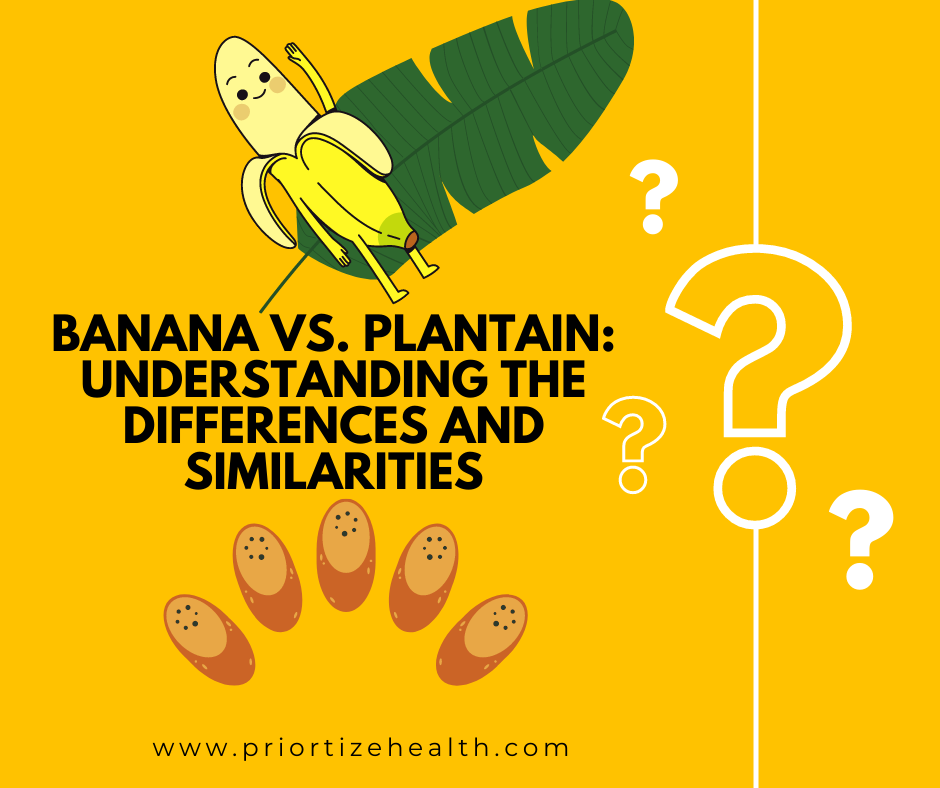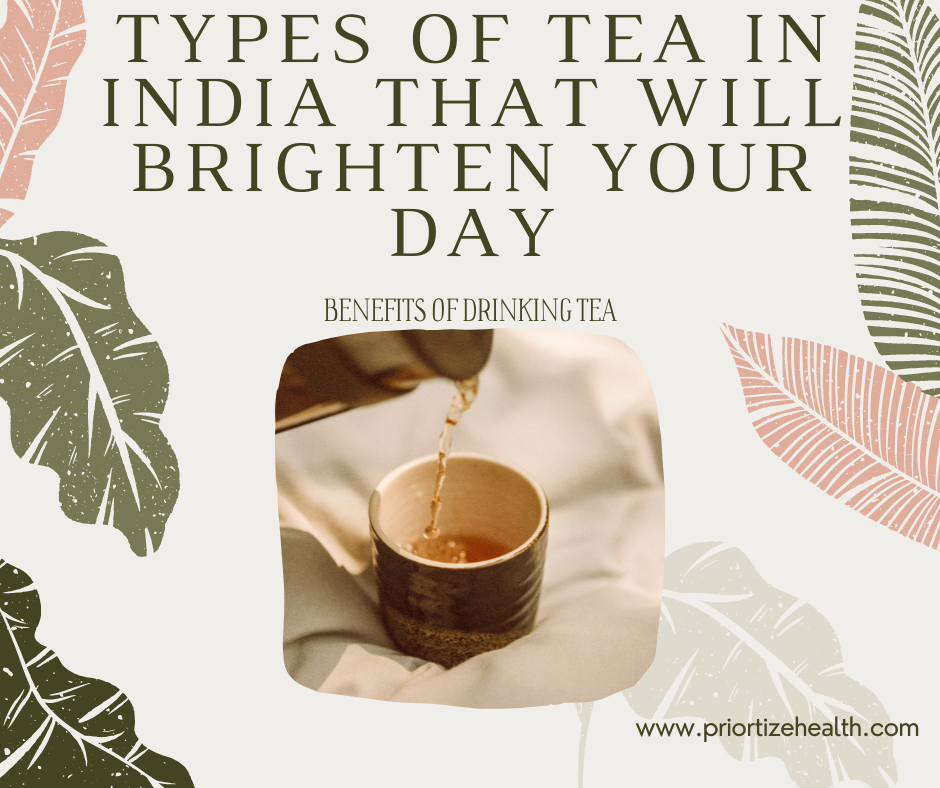
Banana vs. Plantain: Understanding the Differences and Similarities
Whether you’re munching on a sweet, yellow fruit or savouring a delicious fried treat!! There’s no denying the allure of bananas and plantains. These tropical staples have caught the hearts and taste buds of individuals around the world. However, have you at any point thought about what sets them apart? Join us on a tantalizing journey as we peel back the layers and delve into the intriguing world of bananas versus plantains. Get ready to uncover their distinct differences and surprising similarities that will leave you craving more!
The Botanical Distinction
Bananas and plantains are both fruits that belong to the Musa genus and are part of the Musaceae family. Despite their similarities, there are subtle botanical distinctions between the two.
- Bananas: People recognize bananas as dessert bananas or eating bananas. They have an elongated shape and a sweet flavour profile. People consume it when they are ripe, with a soft texture and yellow peel. Bananas are often eaten raw, added to smoothies, utilized in baking, or delighted in as a healthy snack.
- Plantains: Plantains are starchy fruits that people use for cooking. They are often larger and more angular in shape compared to bananas. Plantains are usually consumed when they are less ripe and still have a firm texture and green or yellow peel. They have a less sweet flavour compared to bananas. It has a more neutral taste that makes them versatile for a great many culinary applications.
It’s essential to take note of that while the two bananas and plantains are fruits. The way we use them in cooking and their flavour profiles differentiate them in a significant manner.
Culinary Usage and Flavour Profile
A. Description of the culinary applications of bananas and plantains in different cuisines
1. Bananas:
a. Raw Consumption: Bananas are often eaten fresh and raw as a quick and nutritious snack. People enjoy bananas on their own or sliced and added to breakfast bowls, yogurt, or cereal.
b. Baking and Desserts: Bananas are a well-known ingredient in baking. It adds natural sweetness and moisture to bread, muffins, cakes, and cookies.
We can use bananas to make creamy ice cream or blended into smoothies and milkshakes.
2. Plantains:
a. Frying: One of the most common methods of preparing plantains is frying. We can fry sliced plantains until golden and crispy. This results in delicious dishes like tostones or plantain chips.
b. Boiling and Steaming: We can boil or steam plantains and use it in savoury dishes. We can add plantains to stews, soups, and curries, providing a hearty and filling element to the meal.
c. Mashing and Pureeing: We can mash ripe plantains or pureed and used as a base for dishes like mofongo or fufu. These dishes are popular in Caribbean and West African cuisines.
d. Baking and Desserts: We can incorporate plantains into desserts. Baked plantain recipes, such as plantain cake or plantain bread pudding, offer a unique twist to traditional sweet treats.
B. Contrasting the flavour profiles of bananas and plantains,
- Bananas: Bananas have a natural sweet flavour with a pleasant, mild acidity. They offer a smooth and creamy texture that becomes softer as they ripen. Bananas have a subtle tropical aroma, which is more pronounced when they are ripe.
- Plantains: Plantains have a milder and less sweet taste compared to bananas. They provide a hint of sweetness but are also known for their starchy quality. Plantains have a firmer and denser texture, even when cooked. They offer a neutral aroma. It allows them to adapt well to various flavour profiles and seasonings in savoury dishes.
Nutritional Comparison
1. Macronutrients:
a. Bananas: Bananas are low in calories and fat. They are a decent wellspring of starches, giving quick energy. A medium-sized banana (around 118 grams) contains roughly 105 calories, 27 grams of carbs, 1 gram of protein, and under 0.5 grams of fat.
b. Plantains: Plantains are also rich in carbohydrates, but they contain higher levels of starch compared to bananas. A medium-sized boiled plantain (around 179 grams) contains roughly 232 calories, 62 grams of starches, 1 gram of protein, and under 1 gram of fat.
2. Vitamins and Minerals:
a. Bananas: Bananas are a decent wellspring of a few fundamental nutrients. They are particularly rich in vitamin C and vitamin B6, providing approximately 17% and 22% of the daily recommended intake. Bananas also contain potassium, magnesium, and dietary fiber.
b. Plantains: Plantains offer similar nutritional benefits. They are a decent wellspring of vitamin C, vitamin A, and potassium. Additionally, plantains contain higher levels of magnesium compared to bananas.
3. Caloric Content:
a. Bananas: Bananas are low in calories. The exact caloric content can vary based on the size of the banana, but a medium-sized banana contains around 105 to 120 calories.
b. Plantains: Plantains have a higher caloric content compared to bananas due to their starchier composition. Boiled plantains have approximately 232 to 270 calories per medium-sized serving.
4. Carbohydrate Composition:
a. Bananas: Bananas are rich in natural sugars, in the form of glucose, fructose, and sucrose. They provide quick energy and are often favoured by athletes or individuals needing a natural energy boost.
b. Plantains: Plantains have a higher starch content compared to bananas. The starch in plantains converts into sugars during ripening. But they still contain a higher proportion of complex carbohydrates compared to bananas.
Health Benefits of Consuming Bananas and Plantains
- Nutrient-Rich: Both offer many essential nutrients that contribute to health and wellbeing. (a) Vitamins: Bananas and plantains contain vitamins such as vitamin C which supports immune function. Vitamin B6 helps with energy digestion and mental health. (b) Minerals: They are good sources of minerals like potassium. It is a must for maintaining legitimate heart function and regulating blood pressure. Magnesium plays a role in muscle and nerve function.
- Digestive Health: Bananas and plantains are high in dietary fiber. It promotes healthy digestion and helps prevent constipation. Fiber also contributes to a feeling of fullness, aiding in weight management.
- Energy Boost: Both fruits are excellent sources of carbohydrates. They provide a natural and sustained energy boost. The natural sugars found in bananas and plantains converts into energy. It makes them ideal snacks for athletes or individuals needing a quick pick-me-up.
- Heart Health: The potassium content in bananas and plantains is useful for heart wellbeing. Potassium regulates blood pressure, reduces the risk of stroke, and supports cardiovascular function.
- Antioxidant Properties: Bananas and plantains contain various antioxidants. It includes dopamine and vitamin C. These antioxidants help neutralize harmful free radicals in the body. It reduces oxidative stress and supports cellular health.
- Mood and Mental Wellbeing: Bananas contain tryptophan, an amino corrosive that the body changes over into serotonin. It is a synapse related with mood regulation. Consuming bananas may contribute to feelings of happiness and mental wellbeing.
- Eye Health: Plantains, particularly the ripe ones, are a good source of vitamin A. It is a must for maintaining healthy vision. Vitamin A safeguards the eyes from age-related macular degeneration. It also can promote good night vision.
Potential Drawbacks of Consuming Bananas and Plantains
- Sugar Content: Both of them contain natural sugars. It can be a concern for individuals with diabetes or those following a low-sugar or low-starch diet. The sugars in these fruits are occurring in natural form and accompanied by fiber. But moderation is still advised for the people who need to deal with their glucose levels.
- Caloric Density: Plantains, especially when fried or cooked in oil, can be high in calories. Excessive consumption of calorie-dense plantain preparations may contribute to weight gain. It is especially if not balanced with a varied and nutritious diet and an active lifestyle.
- Starch Content: Plantains have a higher starch content compared to bananas. The starch is in partial form converted to sugars as the plantains ripen. It still results in a higher carbohydrate load compared to bananas. Individuals on low-carbohydrate diets or those with specific dietary restrictions may need to consider their consumption of plantains.
- Allergic Reactions: Although rare, a few people might be sensitive to bananas or plantains. Hypersensitive responses can range from mild symptoms like itching or swelling to severe reactions that need immediate medical attention. In the event that you experience any antagonistic responses in the wake of consuming these organic products, looking for clinical advice is significant.
- Frying and Cooking Methods: Plantains are often cooked by frying. This can increase their calorie and fat content. We ought to consume fried plantains in moderation. It is particularly for individuals concerned about their calorie and fat intake.
- Individual Sensitivities: A few people might have specific sensitivities or intolerances to certain components found in bananas or plantains. For instance, certain individuals might experience stomach related issues, for example, bloating or gas after consuming these fruits. In the event that you notice any discomfort or unfavourable responses, it’s advisable to consult a healthcare professional.
FAQ’s:
Ans: No, plantains and bananas are not the same. While they belong to the same family of plants, they have distinct differences. Plantains are larger, starchier, and less sweet than bananas. People cook them before eating or use in savoury dishes. Bananas are smaller, sweeter, and softer. People eat them in raw form and use it in both sweet and savoury preparations.
Ans: While plantains are a type of banana, they are not eaten raw like we eat the sweet bananas. Plantains are starchy and have a different flavour and texture compared to sweet bananas. People cook them before eating to soften their texture and enhance their flavour. We can use banana in savoury dishes and preparations such as frying, boiling, or steaming. So, while you can eat a plantain raw, it may not be as enjoyable as a ripe, sweet banana due to its starchy nature.
Ans: On botanical basis plantains are fruits since they create from the ovary of a blossom and contain seeds. But people don’t refer them as fruits in culinary terms. Instead, plantains are often classified as a starchy vegetable. It is due to their taste, texture, and culinary uses. People consume sweet bananas as a raw fruit and cook plantains before eating due to their starchiness.





